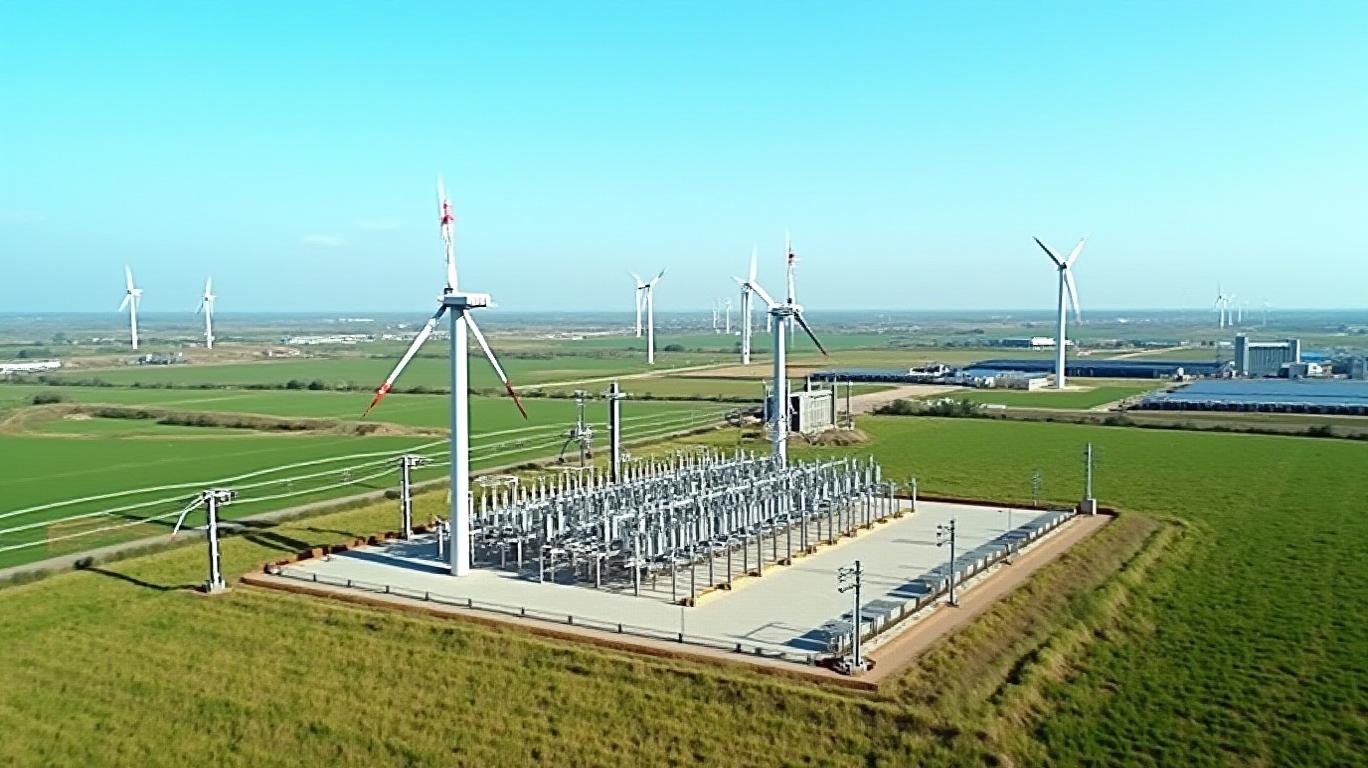Portugal's Blackout Recovery: A Catalyst for Renewable Grid Resilience and Investment Opportunities
On April 28, 2025, Portugal faced a rare crisis as an atmospheric anomaly triggered a cascading blackout across the Iberian Peninsula. While the immediate cause—a phenomenon called “induced atmospheric vibration”—may have been an act of nature, the recovery process has revealed critical vulnerabilities in the energy system and unveiled opportunities for strategic investments. From grid modernization to cross-border collaboration, Portugal’s response to this crisis is shaping a new era of energy resilience, with implications for investors in renewables, infrastructure, and cybersecurity.

The Immediate Crisis and Rapid Response
The blackout, which left 85% of Portugal’s population without power, underscored the fragility of interconnected energy systems. Redes Energéticas Nacionais (REN), Portugal’s grid operator, acted swiftly to restore critical infrastructure, prioritizing hospitals, water treatment facilities, and transportation networks. By Monday evening, 85 of 89 substations were back online, a testament to the country’s preparedness. International support from France and Morocco—via cross-border electricity imports—highlighted the importance of regional interconnectivity.
The recovery also relied heavily on “black-start” power plants, particularly hydropower and gas turbines, which enabled grid rebooting without external power. This underscores the enduring strategic value of diversified energy portfolios.
EDP, Portugal’s largest utility, has long invested in hydropower and renewables. Its stock performance during the blackout—marked by a 12% dip immediately post-crisis followed by a rebound—reflects market confidence in its role as a grid stabilizer.
Investigating the Cause: Atmosphere vs. Cyberattack
While initial fears of a cyberattack were dismissed by EU officials, the incident has spurred renewed scrutiny of grid security. Portugal’s National Cybersecurity Strategy, launched in 2023, now faces accelerated implementation, with a focus on real-time threat detection systems for energy infrastructure.
The root cause—extreme temperature fluctuations destabilizing high-voltage lines—also highlights the challenges of integrating intermittent renewables like wind and solar, which now account for 56% of Spain’s energy mix (a figure Portugal is rapidly approaching). This has intensified calls for advanced grid management tools, such as AI-driven load balancing and distributed energy storage.
Long-Term Reforms: Grid Upgrades and Cross-Border Synergy
The blackout recovery plan emphasizes three pillars:
1. Grid Hardening: Portugal aims to invest €3.5 billion by 2030 in smart grid technology, including advanced power electronics and substation automation.
2. Renewable Integration: Expanding storage capacity—such as battery farms and pumped hydro—will be critical to stabilizing grids reliant on variable renewables.
3. Regional Collaboration: Strengthening interconnections with Spain and Morocco could increase grid redundancy by 20% by 2027, according to ENTSO-E projections.
Galp, Portugal’s leading energy company, has already redirected 30% of its capital expenditure to renewables and storage since 2023, a trend likely to accelerate post-blackout.
Economic Impact and Investment Opportunities
The blackout caused an estimated €1.2 billion in direct economic losses, primarily in manufacturing and transportation. Yet, the crisis has galvanized investment in resilient infrastructure:
- Grid Technology: Companies like Siemens Energy and Schneider Electric are poised to benefit from Portugal’s grid modernization plans.
- Cybersecurity: Firms specializing in industrial control system (ICS) protection, such as Dragos and CyberX, may see increased demand.
- Renewables and Storage: The push for 80% renewable energy by 2030 (up from 62% in 2023) creates opportunities in solar, offshore wind, and battery manufacturing.
This chart illustrates Portugal’s rapid transition, with solar capacity tripling since 2020. Continued growth here will require sustained investment in transmission infrastructure to avoid bottlenecks.
Conclusion: A New Era of Energy Resilience
Portugal’s recovery from the 2025 blackout is a blueprint for balancing climate goals with grid stability. With 85% of its substations restored within 24 hours and international collaboration proving critical, the nation is now positioned to lead in energy innovation.
Investors should prioritize firms with expertise in smart grid tech, renewable integration, and critical infrastructure cybersecurity. Portugal’s strategic location, EU funding (€2.1 billion allocated under the Recovery and Resilience Facility), and rising renewable capacity make it a focal point for capital deployment.
The crisis also serves as a warning: without robust grid modernization, even the most ambitious renewable targets risk destabilization. For investors, this is not merely about profit—it’s about funding the systems that will keep the lights on in an era of climate volatility.
This data underscores the scale of support, with €1.3 billion earmarked for grid upgrades and storage—a clear signal of Portugal’s commitment to long-term resilience.
In conclusion, Portugal’s blackout recovery is a clarion call for investment in energy resilience. The nation’s response, blending rapid action with visionary planning, offers a template for global investors seeking to profit while addressing the defining challenges of our time.










